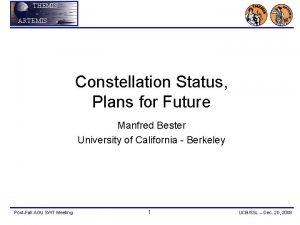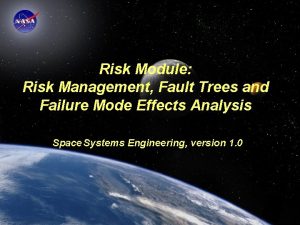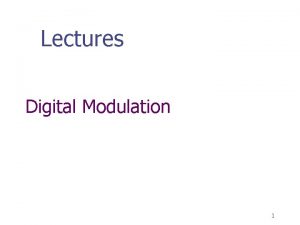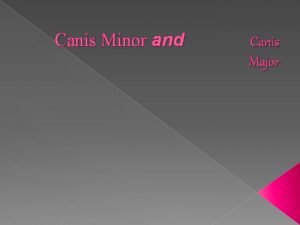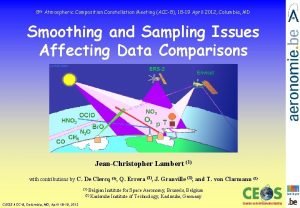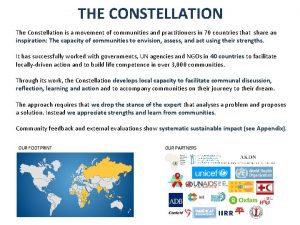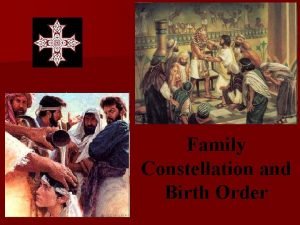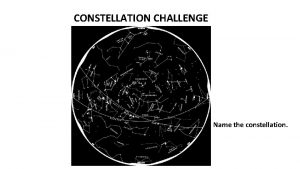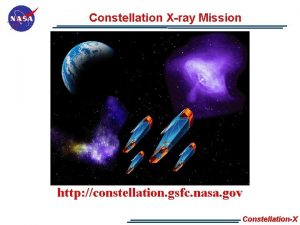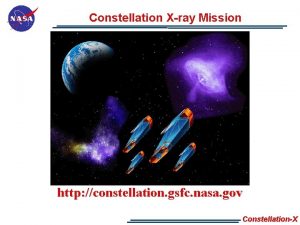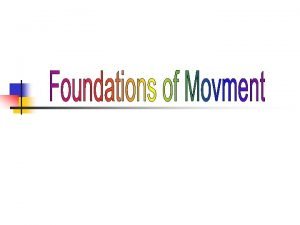THE CONSTELLATION The Constellation is a movement of











- Slides: 11

THE CONSTELLATION The Constellation is a movement of communities and practitioners in 70 countries that share an inspiration: The capacity of communities to envision, assess, and act using their strengths. It has successfully worked with governments, UN agencies and NGOs in 40 countries to facilitate locally-driven action and to build life competence in over 3, 000 communities. Through its work, the Constellation develops local capacity to facilitate communal discussion, reflection, learning and action and to accompany communities on their journey to their dream. The approach requires that we drop the stance of the expert that analyses a problem and proposes a solution. Instead we appreciate strengths and learn from communities. Community feedback and external evaluations show systematic sustainable impact (see Appendix). OUR FOOTPRINT OUR PARTNERS

DIFFERENTIATORS OF OUR APPROACH 1. STRENGTH-BASED Active appreciation and building on local strengths drives and sustains local action. 2. SIMPLE PROCESS Communities go through a set of simple and flexible steps that do not require literacy or a previous knowledge base. 3. GENERIC APPLICATION Thematic issues are only an entry point to build generic competence that can be applied to other issues. 4. DESIGNED FOR SCALE Programs establish support and transfer systems at every level to achieve cost-effective scaling out. 5. GLOBAL NETWORK Constellation coaches in 24 countries combine local understanding with the experience of a global network.

THE COMMUNITY LIFE COMPETENCE PROCESS A simple and ownership-driven learning cycle that can be used by: - Communities in their response to substance use and other issues - The Platform to develop a common vision, strategic framework and action plan 2. Where do we want to be? DREAM BUILDING 1. Who are we? 6. Where did we get to? What did we learn? MEASURE AND LEARN DO WE RECOGNIZE THAT WE CAN TAKE ACTION? 3. Where are we now? SELF-ASSESSMENT DO WE LEARN AND SHARE? 5. Take action IMPLEMENTATION 4. What are we going to do? ACTION PLANNING

OUR WAY OF THINKING EXPERT FACILITATOR We encourage development actors to become facilitators instead of experts

OUR WAY OF WORKING: SALT We describe the attitude of facilitators and their way of interacting as SALT: S : Stimulate, Support A : Appreciate L : Listen, Learn and Link T : Transfer, Team The practice of SALT lets people connect on a human level, creates confidence in their own capacities and motivates communities to take action using their own strengths. Facilitators practice these skills by: - Learning from local action during community visits; Regular exchange and reflection with local teams and a global community; Support of Constellation coaches over a longer period of time.

MCB PROGRAM OUTCOMES IMPACT: Informed, competent and resilient communities in Mauritius who mobilise their strengths to make measurable and verifiable progress in the response to substance use. EXPECTED OUTCOMES 1. A State-Civil Society multi-sectoral Platform to • Ensure a more regular/structured dialogue around opportunities for policy / legislative improvements; and • Enhance the coordination / monitoring of prevention, treatment and care services at national level 2. A National Drug Control Master Plan (centered on demand, supply and harm reduction)

MCB PROGRAM ACTIVITIES Step Activity (over twelve months) 1. Who are we? Visit stakeholders and NGOs to appreciate strengths, build relationships and co-create the program 2. Where do we want to be? Where are we now? What are we going to do? Facilitate event to let the Platform define its common dream, develop a strategic framework, assess its situation and plan for action together 3. Strengthen capacity - 4. Act - 5. What have we learned? Organize training of facilitation team Organize training of Support Teams to support the extension of the approach, learn from action and share results Exchange visit to a National Support Team Support the implementation of the approach in communities through onsite and distance accompaniment Facilitate horizontal transfer to other groups Facilitate quarterly platform meetings Document progress and evaluate results Organize First Annual Learning Festival Publish strategy based on national evidence Develop Joint proposal for 2 nd year

APPENDIX: THE COMMUNITY LIFE COMPETENCE PROCESS STEP 1: WHO ARE WE? When a group comes together to work through the Community Life Competence Process (CLCP), it is as if the group is about to set off on a journey. And before it sets off, it helps to have some introductions, determine who joins the journey and let people have an idea about the journey that they are about to undertake. During this step, facilitators use SALT to appreciate and learn from successes, achievements and strengths in the community. Nobody knows more about a community than the members of the community itself. A community is usually well aware of its weaknesses. More often, what is missing is a discussion of the challenges by the whole community. The Self Assessment methodology opens up the possibility of a communal discussion and the challenge for the facilitation team is to support the community as it goes through that discussion. STEP 2: WHERE DO WE WANT TO BE? In this step, the community describes its destination. This gives it confidence that it is moving in the right direction. When we are busy, it is easy to lose sight of our destination. Another reason is to motivate the community at times when people feel discouraged. STEP 4: WHAT ARE WE GOING TO DO? Once a community is clear about where it wants to be and where it is now, it can make a plan for the journey. At this stage it is easy to be overwhelmed by the gap between where it is now and where it wants to be. There may be so many things to do that the community ends up by doing nothing. The community needs to think carefully about what it will do to give itself a sense of progress in a relatively short time. The tool that we use to define our destination is called 'Building the dream'. During this step, the community describes a world where it deals with the challenge as part of its day-to-day activity. It is not a world where everything is perfect, but one where the community is competent to deal with all aspects of the challenge. The community then goes on to discuss the skills or practices that it needs to reach the dream. Facilitators help communities to think about checking on their progress during the journey. What are things that we can do during the execution of the plan to give ourselves confidence that we are on the right track? And secondly, what can we do during the journey to ensure that we can share our experience with other communities effectively so that they can learn from our experience? STEP 3: WHERE ARE WE NOW? In this step, the community uses a tool called the Self Assessment to get a good understanding of its current position with respect to the challenge. When we understand where we are now and where we want to be, we can think about the action that we can take that will move us in the right direction. The important thing about a Self Assessment is that it is a SELF Assessment. This is not about an expert who comes from outside to assess the community and advise it of its weaknesses or strengths. STEP 5: JUST DO IT! During implementation, the community with the help of facilitators keep monitoring and learning from their action. They also check back to their dream to see if they are still on track. STEP 6: WHERE DID WE GET TO? WHAT CAN WE LEARN/ SHARE? The CLCP is a learning cycle: the final step is to look back at the progress that we have made and then to start again. Where do we want to be? During this step, we also organise Knowledge Fairs so that you can share what you have learned with others.

APPENDIX – WHAT DO COMMUNITIES SAY? “To date, no child and maternal deaths were recorded since April 2009 after the facilitation of the Malaria Competence Approach. There is improved sanitation in the villages as youths are mobilized to carry out brushing around the villages. ” A community member from Sierra Leone. “You see that pile of earth there, it is a hidden treasure. We were sitting there, saying ‘we are poor’. With the SALT approach we say no. We now exploit the resources that are here to build bricks and finance HIV awareness sessions. ” A community member from DR-Congo. “I had never been told that I have strengths. Today I am resolved to use them”. An asylum seeker from Belgium. “We never realized that we have such talents and now we have decided to nurture them. I realized the power of appreciating, affirming and empowering to enable us to exercise our talents in order to build up our community. A community member from Singapore “There is a big increase in local community debate. Association members also have more empathy for the community – when they find sick people in their homes, they respond to them with care, and don’t abandon them. ” A PLHIV community member from Mozambique.

APPENDIX - WHAT DO FACILITATORS SAY? “SALT is such a liberation from the very bounded, routine, repetitive modes of thinking and working I used to have. I can go and make connection with every community. Through my work with SALT, I have been awarded as most inspiring staff among UNFPA field staff. ” Wiwin from Indonesia. “I see this approach as the beginning of a new era in our work and as the revolution that will see Guyana moving forward. I see this as the sustainer of community projects. ” Michael from Guyana. ‘I realized what is missing in my life: listening to people. I need to learn from the experience of other people. ’ Elena from Russia. “Yes, we have used appreciative and participatory approaches before, but the strength of the Constellation lies in its ability to connect rather than create: accepting the agency of response as outside of us. ” Sanghamitra from India. “The only way to get an accurate sense of the power of this approach is by directly getting involved in a SALT visit and becoming conscious of what it is through our own senses. ” Mari-Jo from Spain CONSTELLATION COACHES

APPENDIX - WHAT DO PARTNERS SAY? “The SALT approach deepens all of the stages of our process. SALT even helps us with the challenges of religion and culture. It brings organizations and facilitators closer to the people. ” Daniel from Je. CCDO, Ethiopia “After the SALT approach was introduced in Kananga, 400 prisoners were lined up to get tested. It is the first time I see such enthusiasm for HIV testing. ” Jean Kabwau, PNMLS, DR-Congo. “Thanks to the Constellation for this small revolution in the way we do capacity building. The SALT methodology used at our workshop in Accra will produce much more sustainable and self-initiated follow-up among the participants. ” Peter Prove, Ecumenical Advocacy Alliance, Switzerland. “Comparing costs and outcomes of the CLCP using various scenarios, it is found that the approach is likely to be very cost-effective in Thailand when comparing with other HIV prevention programs from the systematic review. ” HITAP cost-effectiveness evaluation. “In the three health zones in Mbandaka where the SALT approach was facilitated, there were no more cases of Cholera since the outbreak. In the neighboring villages, the cholera cases continued as before. ” UNICEF DRCongo.


